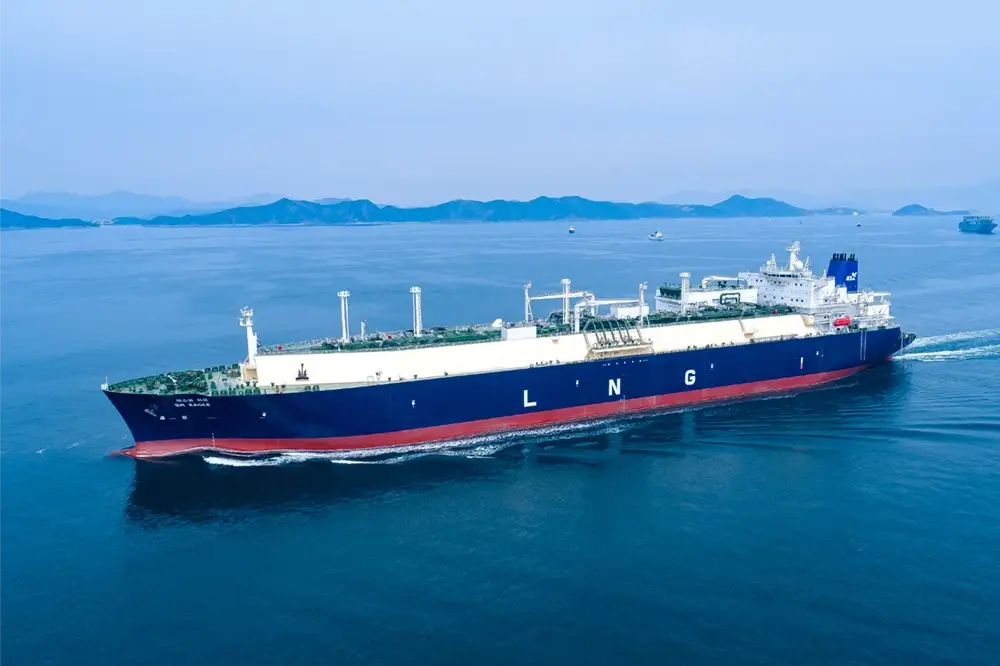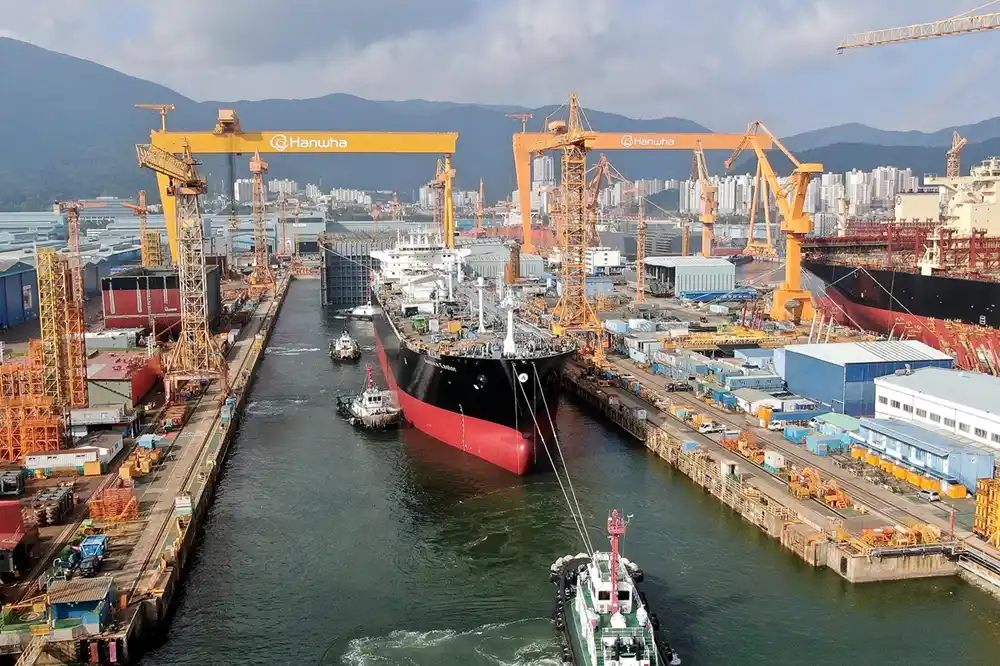How Hanwha Philly Shipyard plans to anchor America’s next shipbuilding boom

The global fleet is aging. America’s industrial base needs to catch up.
The world’s fleets, from defense to trade and transportation, are overdue for renewal. More than half of the global fleet is now over 20 years old, while scrapping remains low and demand continues to rise. In 2024, global ship orders surged nearly 34%. Geopolitical uncertainty, regulatory pressure, and renewed focus on supply-chain resilience are driving governments to rethink how to strengthen industrial capacity and build vessels fit for long-term needs.
In the U.S., shipbuilding has become both a strategic and economic priority. Despite being the world’s largest exporter of liquefied natural gas (LNG), the country still relies heavily on foreign-built vessels to transport its energy abroad. Recognizing this imbalance, policymakers have introduced bipartisan initiatives to expand domestic shipbuilding capacity—not just in volume, but in complexity. Meeting this goal requires infrastructure, advanced manufacturing, and, above all, a skilled workforce.
One shipyard is already positioning itself to deliver. In December 2024, Hanwha acquired Philly Shipyard. Now operating as Hanwha Philly Shipyard, the company aims to increase its output from one vessel per year to 10 to 20 annually within the next decade. To support this transition, Hanwha will expand and modernize the yard, while introducing a full-capability technology transfer model to train a skilled U.S. workforce and enable the domestic construction of advanced vessels.

A Hanwha-built LNG carrier
Why advanced vessels require global expertise
Scaling up production is only part of the challenge. The real test is building the most complex ships, such as LNG carriers and Navy auxiliary vessels, which are essential to U.S. energy security and defense readiness but remain extremely difficult to construct. Cryogenic cargo systems, boil-off gas capturing and reliquefaction, subzero insulation, and dual-fuel propulsion technologies make LNG carriers among the most specialized vessels in the world. Only a handful of shipyards worldwide are qualified to produce them.
To spur capability at home, policymakers have introduced targeted mandates. In 2025, the U.S. Trade Representative set phased rules requiring that beginning in April 2028, at least 1% of all LNG exports must be transported aboard U.S.-flagged and crewed vessels, rising to 15% by 2047. These measures are designed to harden U.S. energy logistics while creating the conditions for technology transfer, investment, and job growth.
Since developing these ships independently would take years of costly R&D, the fastest and most practical solution is targeted technology transfer, including licensed designs, digital production systems, and workforce training. Companies like Hanwha bring distinct advantages thanks to their scale, track record, and innovation pipeline.
Hanwha Ocean, the first shipbuilder in the world to deliver 200 LNG carriers, is one of only a few companies capable of producing them at scale. In July 2025, Hanwha Shipping placed an order with Hanwha Philly Shipyard for an LNG carrier to be built through a joint-build model with Hanwha Ocean, providing a platform to transfer expertise, processes, and supplier qualifications directly to U.S. workers.
A new model for technology transfer
Conventional joint-production models often assign partner yards minor tasks, limiting the knowledge transfer. This project takes a different approach: Hanwha Shipping, as the shipowner, places the order with Hanwha Philly Shipyard, while Hanwha Ocean jointly executes the build. Since all three companies are part of Hanwha Group, workers in Philadelphia will receive on-the-job training at Hanwha Ocean’s Geoje shipyard in South Korea — a facility with decades of LNG carrier experience — accelerating the transfer of critical technology and skills.

A welder works on a vessel at Hanwha Philly Shipyard
Preparations are already underway at Hanwha Ocean following the initial LNG carrier order and confirmation of a second. In August, Hanwha Shipping also placed an order for 10 medium-range (MR) oil and chemical tankers, the largest U.S. commercial vessel order in more than 20 years and the highest-value order ever recorded at an American yard. Together, the LNG and MR tanker projects create a sustained production runway that supports advanced process adoption, domestic supplier qualification, and large-scale workforce development.
The transfer will also give Hanwha Philly Shipyard access to Hanwha Ocean’s ongoing innovations, including its advanced work process and next-generation production capabilities. At the same time, the yard is expanding its apprenticeship program to build a versatile U.S. workforce for long-term growth.
“We are investing in the future of U.S. shipbuilding by creating skilled jobs and equipping workers with the tools and training they need to succeed,” says Dong Kwan Kim, vice chairman of Hanwha Group. “By combining America’s industrial strength with Hanwha’s proven shipbuilding expertise, we aim to create the most advanced shipyard in the world.”
Beyond current orders, this model positions Hanwha Philly Shipyard for expanded lifecycle services, from maintenance to modernization, equipping it to compete for both commercial and naval contracts.
“Hanwha Philly Shipyard marks the beginning of our investment in the U.S. shipbuilding industry. We are here as a long-term partner, committed to building a robust foundation that will strengthen sovereign capacity and deliver advanced technology for both U.S. commercial and defense needs,” says Michael Coulter, CEO of Hanwha Defense USA.

Hanwha Ocean’s Geoje shipyard in South Korea
Looking ahead
Through sustained investment and structured technology transfer, Hanwha Philly Shipyard is rapidly expanding its ability to support advanced U.S. shipbuilding. As full capability transfer is achieved, the yard will be positioned not only to build LNG carriers, but to deliver long-term lifecycle services critical to maritime resilience.
Over time, the company’s integrated model of joint execution and workforce training will help establish a new generation of American shipbuilders, supported by smart systems and clean-fuel technologies. The result will be a modernized yard prepared to advance U.S. priorities, from defense logistics to commercial fleet expansion.
By strengthening U.S. shipbuilding, Hanwha is contributing to broader goals of economic security, defense readiness, and industrial competitiveness, laying the groundwork for a more self-reliant and strategically aligned maritime future.
This content was produced in partnership with Custom Content from WSJ.
Get the latest news about Hanwha, right in your inbox.
Fields marked with * are mandatory.
- Non-employee
- Employee





